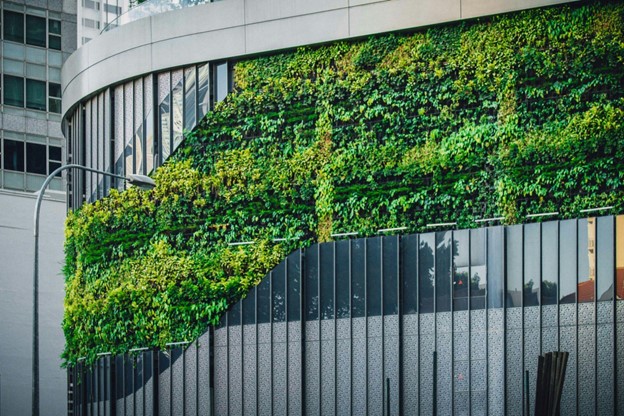My blog focuses on Technology. A major strategy for designing buildings and infrastructure in the future is incorporating sustainability. The following contributed post is entitled, Designing a Sustainable Interior: Important Things for a Truly Green Building.
* * *
Building green doesn’t just involve eco-friendly construction methods. Interior design and materials used also play a huge role in energy efficiency, waste reduction and creating healthier environments. In this blog, we will look at some of these things sustainable building must consider, from floors to windows, in order to truly reflect eco-conscious values.

Photo by Lily Banse on Unsplash
Energy-Efficient Windows for Sustainable Viewing
Windows are a big element of sustainable building design, yet often go underappreciated in their energy saving potential. Double or triple pane windows equipped with Low-E coatings represent one of the best investments for energy savings in sustainable buildings. Airtight windows reduce heat transfer, keeping interiors cool in summer and warm in winter. And significantly reducing artificial heating or cooling needs. Windows from manufacturers using recycled or non-toxic materials add a sustainability benefit while exterior solutions such as window awnings or motorized shades help naturally regulate sunlight exposure for increased energy efficiency while adding an aesthetic element to a building facade.
Eco-Friendly Flooring That Matters
When it comes to flooring, there are a lot of sustainable choices. Bamboo and cork are more common choices due to their renewable nature and biodegradability. Bamboo grows quickly while cork trees can be harvested without harming them. Recycled materials in carpets and rugs that are installed in commercial buildings also add another eco-friendly element. These rugs add durability, with low maintenance requirements, as well as providing an inviting ambience. They also contribute to improving the occupants’ wellbeing and overall mood.
Furniture with a Green Heart
Furniture is another important aspect of creating an environmentally-friendly interior. Look for pieces made of sustainably sourced or reclaimed wood, recycled metals or biodegradable materials. Supporting local artisans and businesses that practice fair trade practices will only enhance this effort further. Also, prioritize modular pieces that can be disassembled and recycled at the end of its lifecycle in order to encourage circular economic practices.
Decorative Elements that Don’t Cost the Earth
Decor can also be eco-friendly. When choosing decorative elements for your interior, be mindful of their environmental impact. Choose rugs, curtains and cushions made from organic or recycled materials while avoiding plastics and synthetic fabrics wherever possible in favor of products dyed with non-toxic dyes such as natural pigments. Houseplants offer another excellent way to add vibrancy while improving the air quality. Low maintenance species such as snake plants or pothos will bring vibrancy while requiring minimum care from you.
The Green Standard in HVAC Systems
When you install heating, ventilation, and air conditioning systems, you should prioritize units that are energy efficient and reduce environmental impact. High-performance systems using renewable energy sources or featuring programmable thermostat technology can dramatically cut energy use. When combined with adequate insulation they ensure minimal energy loss throughout your building.
Conclusion
Each component of a green building’s interior can represent a step in the direction of greater environmental responsibility, from energy-saving windows and flooring made of eco-friendly materials or furniture crafted from renewable resources. By prioritizing eco-friendly materials and practices you can create a future where your business contributes to real change, one sustainable building at a time.
